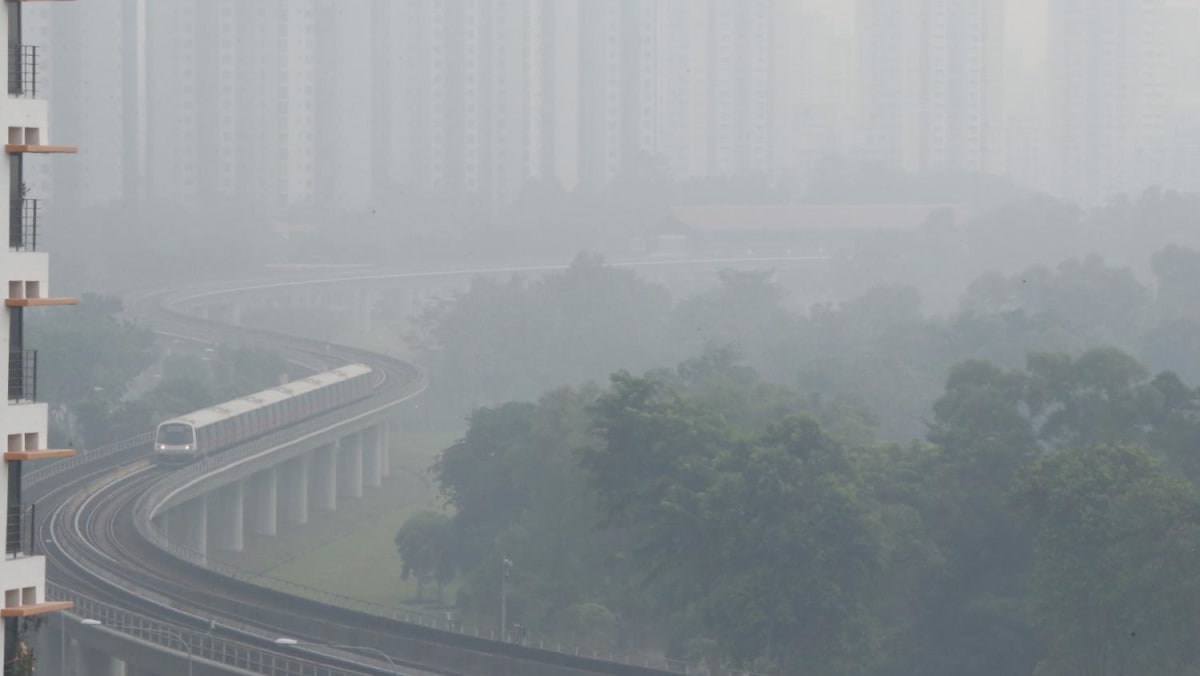
SINGAPORE — There is a high likelihood of severe haze occurring in Southeast Asia this year, a Singapore think-tank reported, although the situation is unlikely to be as severe as in 2015, when the pollutant standards index (PSI) here reached hazardous levels.
This is based on experts' predictions that there will be a severe dry spell hitting the region due to the El Nino weather phenomenon that brings with it hotter and drier conditions.
The annual Haze Outlook 2023 report was released on Wednesday (June 21) by the Singapore Institute of International Affairs (SIIA), and it is the first time since the institute started publishing the yearly reports in 2019 that it has given a “red” rating for 2023.
The scale goes from “green” (low risk) to “amber” (medium risk) to “red” (high risk).
The forecast is in line with an announcement made last month by the Asean Specialised Meteorological Centre, which monitors and assesses land and forest fires as well as the occurrence of transboundary smoke haze affecting the region where the 10 member states of the Association of Southeast Asian Nations (Asean) lie.
The centre determined that there may be a higher risk of transboundary haze occurring between June and October in the southern Asean region. It said that with a high likelihood of El Nino conditions developing in the coming months, the dry season is expected to be more intense and prolonged compared to recent years, and extend into October.
For the latest report by SIIA, its high-risk assessment was based on three main factors, namely:
- The weather: Meteorological forecasts such as temperature and rainfall, where a heatwave may increase the chance of forest and peat fires burning out of control and creating haze
- Government policies: Actions taken by governments as well as the cooperation and coordination between public and private sectors
- Market conditions: Companies in the agricultural business sector respond to markets and prices, and smaller plantation operators may expand irresponsibly in response to price signals by doing land clearing that leads to deforestation
Associate Professor Simon Tay, chairman of the institute, said of the significance of the red rating: “Although we have seen bad haze in the years before the outlook was published, the outlook has never been so pessimistic, so concerned as we are today.”
SIIA is a non-profit and independent think-tank that analyses Asean-focused policies as well as issues driving environmental sustainability, among others.
Its report carried a forecast by the United States National Ocean and Atmospheric Administration, where there is an 84 per cent chance that this year’s El Nino will “go beyond the moderate range into a strong event”.
There is even a 25 per cent chance of a “super El Nino” occurring.
Mr Aaron Choo who co-authored the report said that a “moderate” El Nino is classified as when the sea surface temperature is recorded at about 1°C above normal, while a “severe” or “super” El Nino is classified as when the sea surface temperature is recorded at about 2°C above normal.
The senior assistant director of special projects and sustainability at SIIA added: “In 1997 and 2015, there were over 2°C temperature differences. When it hits that, it’s super El Nino territory, and we are in a very high probability that there will be severe haze.”
However, he said that even in the worst-case situation, the severity of the haze “should not be as bad as 2015”, owing to the Indonesian government’s progress on fire prevention, fire suppression as well as strong policies in place.
Mr Choo added: “Preventative actions and proactive responses are critical. It is important that officials continue to closely watch the situation on the ground as weather conditions turn.”
On this point, Assoc Prof Tay said that if the El Nino effect is not severe, the policies in place could make the severity of the haze in Singapore more akin to 2019 rather than 2015.
In Singapore, the 24-hour PSI reading crossed the 300 mark to the hazardous range in 2015, while the reading went beyond 100 to the unhealthy range in 2019.
A study by researchers from Nanyang Technological University once placed the total cost of the two-month-long haze in 2015 at an estimated S$1.83 billion. At that time, schools had to close and more than 40,000 Singaporeans claimed medical subsidies for illnesses linked to the polluted air.
Late last month, the National Environment Agency issued an advisory warning of the risks of a severe haze.
It reminded the public to prepare for what may come, such as by having enough N95 masks and if they have air purifiers, that these appliances be in “good working condition”.
Standing by this advice, Assoc Prof Tay pointed to the shortage of N95 masks in 2015 as an example of the importance of haze preparedness.
“I think our red alarm does warrant everyone taking certain steps, which are low-cost options. It is better to be prepared than caught off guard.”
https://news.google.com/rss/articles/CBMicGh0dHBzOi8vd3d3LnRvZGF5b25saW5lLmNvbS9zaW5nYXBvcmUvaGlnaC1yaXNrLXNldmVyZS10cmFuc2JvdW5kYXJ5LWhhemUtMjAyMy1zaW5nYXBvcmUtcHVibGljLXByZXBhcmVkLTIxOTc5NDbSAQA?oc=5
2023-06-21 17:22:00Z
2170829996
Tidak ada komentar:
Posting Komentar